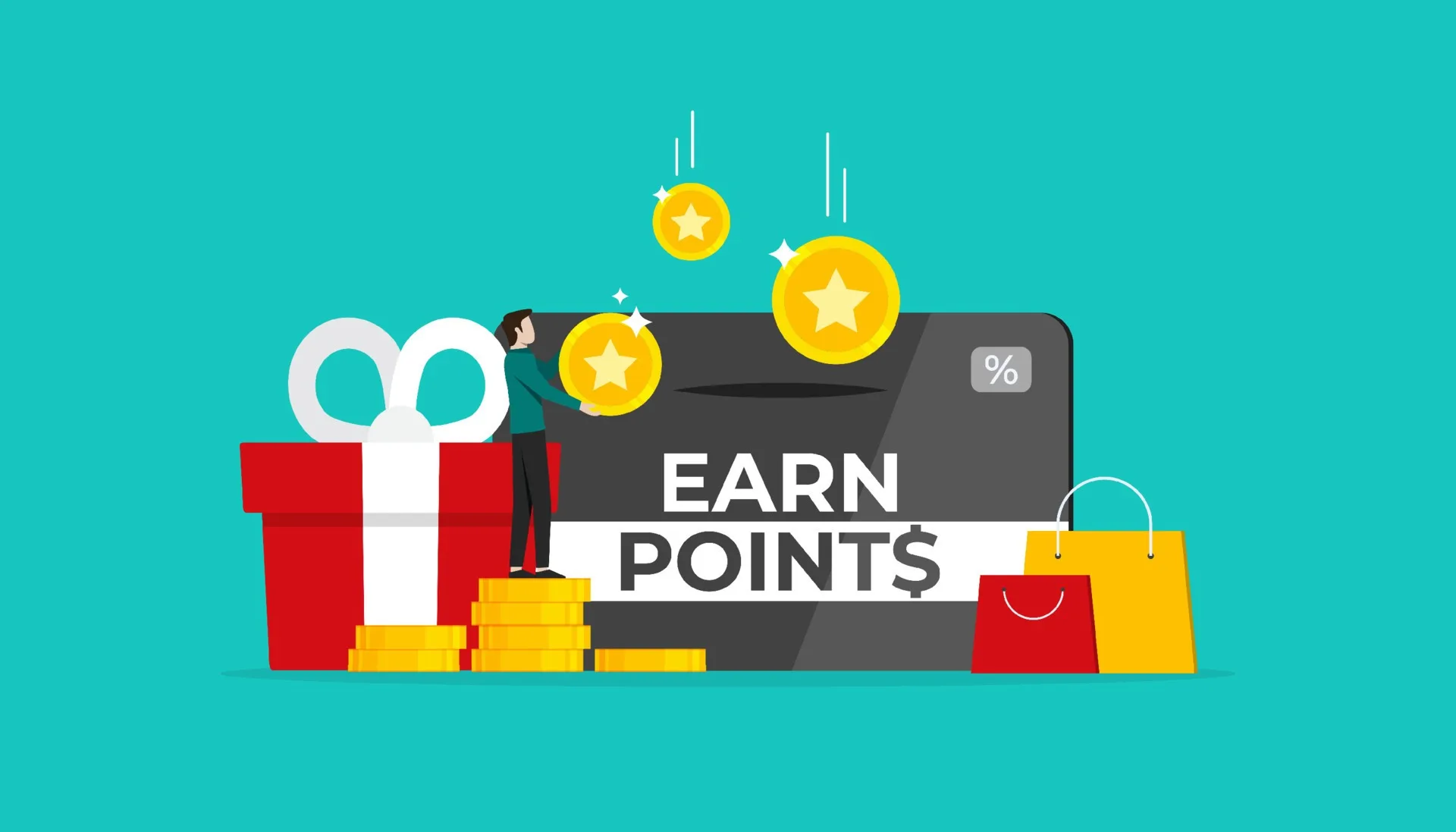Have you ever thought about the best way to reward your customers for their loyalty? While you could stick to traditional methods such as giving 10% back on all purchases, you could also offer unique and exciting experiences of access to an exclusive event. Let’s start by defining each of these rewarding methods before diving into when and why you should use each for your business.
The difference between transactional and experiential rewards
Understanding the difference between transactional and experiential rewards is the key to deciding which type is most valuable to your customers.
Transactional rewards
Transactional rewards are financial incentives that customers can use to save money on future purchases.
Whether you know it or not, you’re probably already very familiar with this type of reward. From free shipping to dollars off, these rewards are extremely common in customer loyalty programs, and are quite popular with many types of shoppers.

An example of transactional rewards in a coffee shop might be a loyalty card program. Here’s how it could work:
- Loyalty Card: The coffee shop provides customers with a physical or digital loyalty card. Each time a customer makes a purchase, they receive a stamp or point on their card.
- Reward Threshold: The coffee shop sets a reward threshold, such as “Buy 9 coffees, get the 10th coffee free.”
- Instant Gratification: Customers are motivated to return to the coffee shop to accumulate stamps or points and reach the reward threshold.
- Redemption: Once the customer reaches the specified threshold, they can redeem their reward (e.g., a free coffee) during their next visit.
- Continued Engagement: The cycle continues as the customer continues to make purchases, earning more rewards and reinforcing their loyalty to the coffee shop.
Experiential rewards
Experiential rewards give your customers access to experiences that can’t be found anywhere else, allowing you to build deeper relationships with your customers.

Unlike transactional rewards, this type of reward goes beyond a dollar value to improve the larger customer experience. Think private event invites, early access to new products or sales, access to product test panels, and more.
Here’s an example of experiential rewards in the context of a coffee shop:
- Coffee Tasting Events: The coffee shop hosts exclusive tasting events where customers can sample new blends, learn about coffee brewing techniques, and interact with expert baristas. These events provide customers with a unique and memorable experience that goes beyond simply purchasing a cup of coffee.
- Barista Training Workshops: The coffee shop offers hands-on workshops where customers can learn to become amateur baristas. Participants get to behind the counter, learn about different coffee beans, practice latte art, and gain a deeper appreciation for the craft of coffee making.
- VIP Lounge Access: The coffee shop establishes a VIP lounge area reserved for loyal customers or members of a loyalty program. This exclusive space offers comfortable seating, complimentary snacks, and personalized service, providing customers with a premium experience every time they visit the coffee shop.
- Coffee Pairing Dinners: The coffee shop collaborates with local restaurants to host coffee pairing dinners, where customers can enjoy a multi-course meal paired with carefully selected coffee beverages. These culinary experiences elevate the coffee-drinking experience and showcase the versatility of coffee as a gourmet ingredient.
- Community Events: The coffee shop organizes community events such as open mic nights, art exhibitions, or book clubs, creating a welcoming space where customers can connect with each other and engage in shared interests beyond coffee.
The pros and cons of transactional rewards
Transactional rewards offer immediate benefits to customers in exchange for their patronage or specific actions. Here are some pros and cons of using transactional rewards:
Pros:
- Transactional rewards provide instant gratification to customers, which can incentivize repeat purchases and foster loyalty.
- Offering tangible rewards such as discounts, free items, or cashback can be easily understood and valued by customers.
- Transactional rewards programs are relatively easy to set up and track, especially with the help of modern digital tools and loyalty program software.
- Businesses can directly measure the return on investment (ROI) of transactional rewards by tracking metrics such as sales, redemption rates, and customer retention.
- A well-designed transactional rewards program can differentiate a business from its competitors and attract new customers who are motivated by discounts or incentives.
Cons:
- Transactional rewards may encourage transactional behavior rather than fostering genuine loyalty or long-term relationships with the brand.
- Offering discounts or free items as rewards can eat into profit margins, especially if not carefully managed or if customers abuse the system.
- Customers may switch loyalty to competitors who offer better or more attractive transactional rewards, leading to a constant need to increase incentives to retain customers.
- Transactional rewards programs can lead to a purely transactional relationship between the business and its customers, lacking emotional connection or brand loyalty.
- Transactional rewards may primarily attract customers who are solely motivated by discounts or freebies, rather than those genuinely interested in the products or services offered.
The pros and cons of experiential rewards
Experiential rewards focus on providing customers with memorable and meaningful experiences rather than tangible goods or discounts. Let’s explore the pros and cons of using experiential rewards:
Pros:
- Experiential rewards create emotional connections with the brand by offering unique and memorable experiences that resonate with customers on a deeper level.
- Offering experiential rewards sets a business apart from competitors who may rely solely on transactional rewards, helping to attract and retain customers who value experiences over material incentives.
- Experiential rewards can lead to higher levels of customer satisfaction and loyalty, as customers appreciate the added value and personalization of immersive experiences.
- Customers who have positive experiences through experiential rewards are more likely to become brand advocates, sharing their experiences with others and generating word-of-mouth referrals.
- Experiential rewards foster long-term loyalty by building lasting memories and relationships with customers, leading to sustained engagement and repeat business.
Cons:
- Creating and delivering memorable experiences can be more costly and resource-intensive compared to offering transactional rewards, especially for small businesses with limited budgets.
- Unlike transactional rewards, which can be easily quantified in terms of sales or redemption rates, the impact of experiential rewards on customer loyalty and brand perception may be more challenging to measure accurately.
- Ensuring consistency and quality in experiential rewards across different locations or customer interactions can be difficult, potentially leading to variations in customer experiences and perceptions of the brand.
- Experiential rewards may only appeal to a subset of customers who value unique experiences, potentially excluding those who prefer more tangible or transactional incentives.
- As experiential rewards become more common in the marketplace, businesses may face increasing pressure to innovate and deliver increasingly unique and memorable experiences to stand out from competitors.
Wrapping Up
While this shouldn’t come as a surprise, we recommend incorporating both into your rewards program! Offering both transactional and experiential rewards allows you to automate and differentiate.
Using both types of rewards allows you to have an automated rewards strategy while still delivering a personalized experience that sets you apart from competitors. Transactional rewards are easy to automate and should be used to reward every customer, whereas experiential rewards require manual processes and should mainly be used to reward your top customers.
With these tips in mind, how will you incorporate transactional and experiential rewards into your program?




